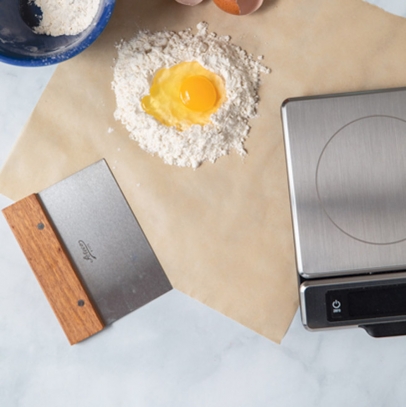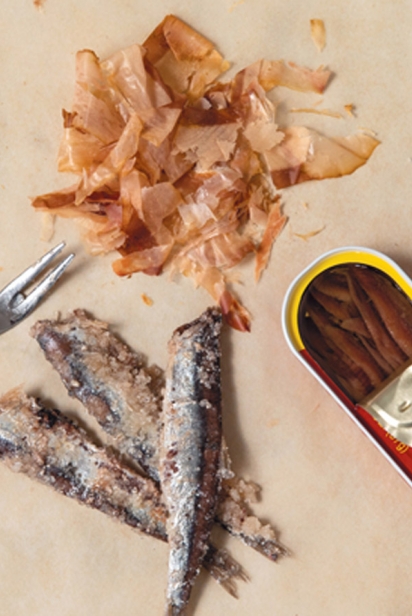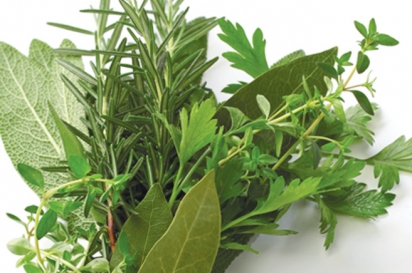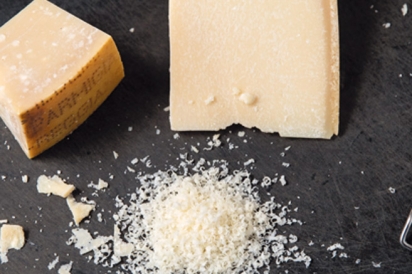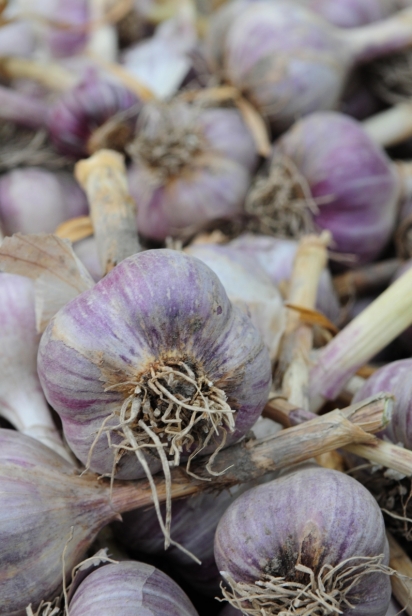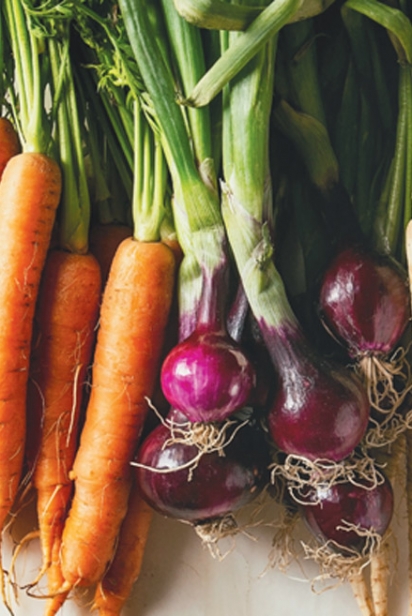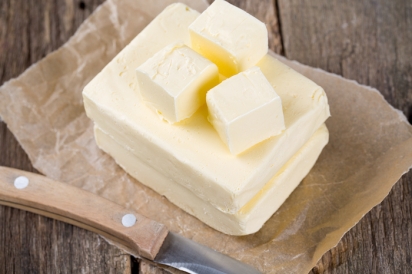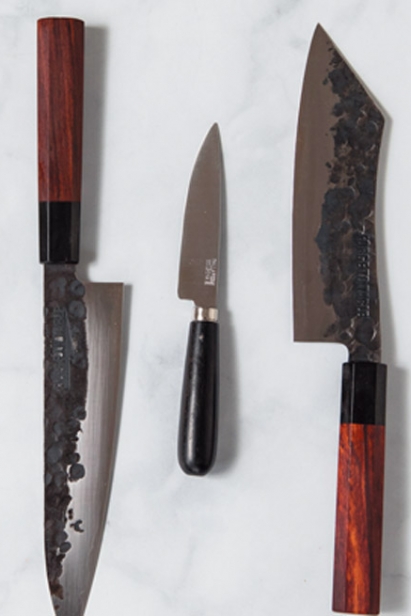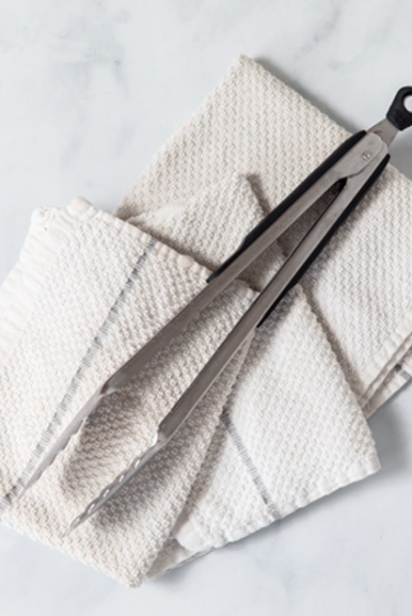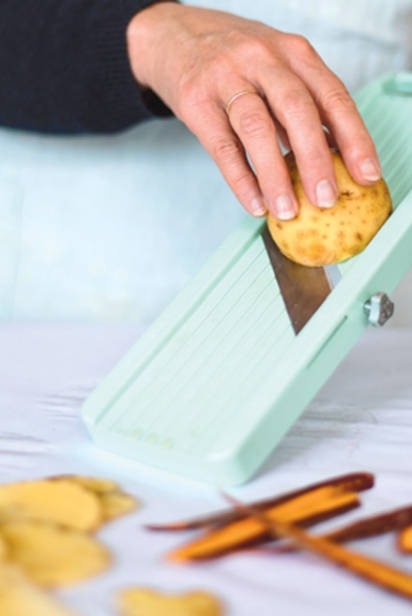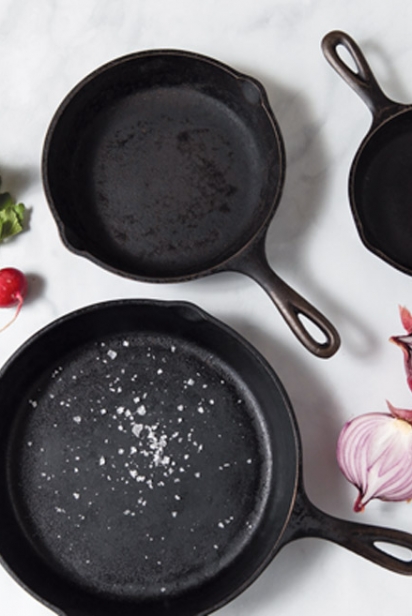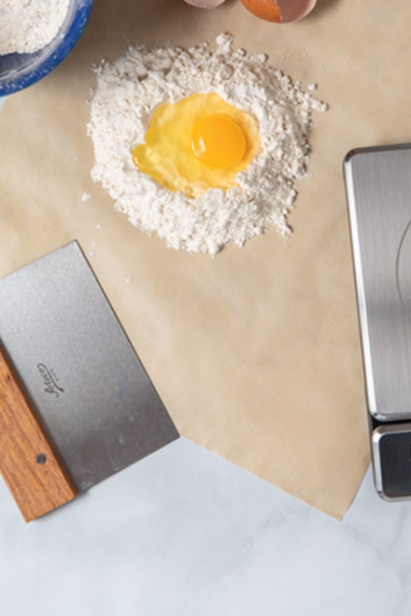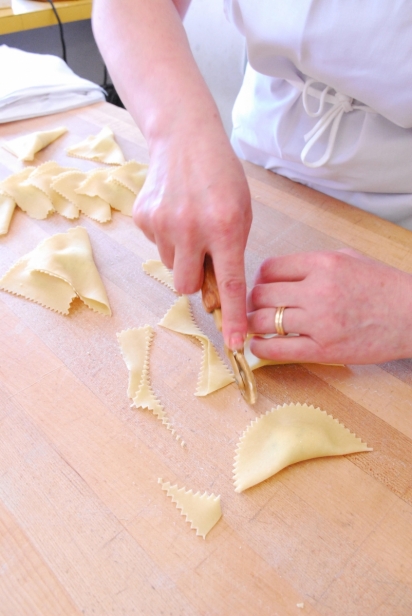Tips & Tricks from Your Favorite Chefs
Sage Advice to Help You Cook Like a Pro
Chefs: They make it all look easy. We asked nearly a dozen chefs around Rhode Island for their tried-and-true cooking tips and their most trusted tools of the trade to help us sharpen our own skills in the kitchen. Here is what they revealed:
Food + Flavor
TINY LITTLE FISH
Using salty little fishes will impart flavor without making food taste fishy. It’s something we do often—and it’s an easy way to amp up umami flavor and make any simple dish more complex. You can accomplish this in many ways: Use anchovies, fish sauce, dried bonito flakes, Worcestershire sauce, dried shrimp, etc. Throw some anchovies in a creamy dressing. Toss pasta with some lemon, butter, garlic, Parmesan and minced anchovies. Use a few drops of fish sauce in your tomato sauce, and so on.
—Matthew Brown, Butterhead Food Truck & Sandwich Co., South County
LOCAL FOODS & SPICES
Let food speak for itself! When using high-quality vegetables and proteins, the flavors are already there. Source locally, add your favorite mixture of spices and, most importantly, keep it simple.
—Deanna Marandola and Tracy DeFusco, Amaryllis, Providence
FRESH HERBS & SEASONAL INGREDIENTS
Begin any recipe with the freshest seasonal ingredients you can find. Season, season, season and do it in layers. And always use fresh herbs when available. When roasting vegetables, keep them separated to retain a little crispness, each one may cook differently. When everything comes together, it will be delicious!
—Phyllis Arffa, Blaze Smith Hill, Providence
SMOKY FLAVOR SANS MEAT
There are a few things on the market that mimic that smoky flavor. I prefer to stick to herbs and spices, like cumin and smoked paprika that are reminiscent of that smoke essence—plus liquid smoke, smoked sea salt and other seasoning bases. They can help amplify that smoky flavor folks are used to while in keeping with a plant-based diet.
—Bree Smith, The Afro Indigenous Vegan, Providence
AGED CHEESES
I choose pecorino (aged nine months) for its sharpness and saltiness to finish most of my pasta dishes. Be careful swapping pecorino in recipes that call for Parmesan because of its different flavor, texture and saltiness. Grana Padano, aged 18 months, is well rounded and tends to melt better when added to sauces, risottos and baked dishes. We use Parmigiano-Reggiano, aged 24 months, as a “finishing” cheese that gets shaved over select dishes to bring out the flavor components of the dish.
—Gina Pezza, Vanda Cucina, Warwick
CORN MASA
You’ll always find corn masa in my pantry. It’s the star of Mexican cuisine. Indigenous Aztecs discovered the process of nixtamalization, which makes the corn digestible and increases its nutritional value. They used it in many foods that are integral parts of our cuisine, like our version of hot chocolate: a thick rich drink called atole. It’s used in making tortillas, traditional foods like sopes and tlacoyos, and even thickening sauces. It is also gluten-free so it is very versatile in that sense, too. It’s such a great ingredient to have in the kitchen.
—Mariana Gonzalez-Trasvina, Bar ‘Cino, Newport
OVEN-ROASTED TOMATOES
Oven-roasted tomatoes are a versatile, underrated ingredient staple that we always have in the Duck Press kitchen. With their umami flavor, you can add them to almost anything. Simply cut out the stems and slice an X into the opposite end of plum tomatoes. Blanch in salted boiling water until the skin starts to come off. Immediately remove and put into an ice bath. When cooled, peel skin, cut tomatoes in half and remove seeds. Toss withextra-virgin olive oil, salt and pepper, fresh thyme leaves, thinly shaved garlic and minced shallots. Lay out on a lined sheet pan so they are flat and not touching. Bake at 275°F for 30 minutes; then 200°F for 2 more hours. Chopped up, these can be used in sauces for pasta, fish, vinaigrettes, salads, soups or on a toasted baguette with ricotta or mozzarella.
—Mark Bryson, Duck Press, Wakefield
BRINING
I love what brining does to meat and even veggies. Most people brine once a year, for their Thanksgiving bird. Not me. I truly believe it’s one of the most special things we do at the restaurant. We brine all of our chicken and turkey but we also brine steak tips, cauliflower for roasting and have experimented with pretty much any ingredient we feel would be elevated by a nice, flavorful bath. The result? Moist, tasty ingredients, from the inside out, that already have a layer of built-in flavor before any cooking method is introduced. Brining is a head start on building flavor.
—Angie Armenise, Blackie’s Bulldog Tavern, Smithfield
GARLIC
You’ll find plenty of garlic, salt and acid, most commonly lemon, in Lebanese cuisine. Raw garlic is often used but goes largely undetected in Lebanese recipes. It’s all about the process. I learned from my grandmother the best way is to pound the garlic with a good amount of coarse salt with a mortar and pestle. This is still my preferred method but I have come to find that using a Microplane grater is acceptable and can be more efficient. The trick is to release the oils in the garlic to really bring out the fresh flavor and balance the astringency of the bulbous allium. The result is velvety pungency.
—Matthew Brown, Butterhead Food Truck & Sandwich Co., South County
CUMIN
We swear by cumin. It’s earthy, warm, and complements other spices well. We use it in all of our spice blends and many of our recipes. To bring out its best flavor, we toast the seeds and then crush them with a mortar and pestle.
—Deanna Marandola and Tracy DeFusco, Amaryllis, Providence
PEPPER
Always use fresh-cracked pepper from a pepper mill. I use a separate mill for whole fennel seeds and coriander seeds. The ground seeds are tasty with poultry, pork and fish.
—Champe Speidel, Persimmon, Providence
FLAVOR BUILDERS
My favorite tip in cooking is to use “flavor builders”: fresh herbs, scallions, shallots, fresh bay leaves and diced celery. Added at the last minute of a long braise or a quick sauté they make everything taste much deeper and brighter. Celery adds a wonderful crunch and bitter note to anything.
—Champe Speidel, Persimmon, Providence
MARINADES
When grilling, marinades can work magic with meats: They help caramelize the surface, tenderize and add a depth of flavor during a shorter cooking time. A simple marinade is lime juice, soy sauce, Worcestershire sauce and honey. When creating your own marinades, think acid + sweetness + salt + herbs.
—Champe Speidel, Persimmon, Providence
HOMEMADE CHICKEN STOCK
Make homemade chicken stock and freeze it. Adding quality chicken stock to soups, braises, sauces and even pastas can elevate any dish into something special. Make it from the carcass of a roast chicken dinner. Freeze any bones or scraps from two, three or even four chickens and make a big batch of stock on a rainy or snowy Saturday.
—Champe Speidel, Persimmon, Providence
OLIVE OIL
Understanding olive oil will change your cooking. At Vanda we use two different types of olive oil. For finishing dishes we use a high-quality, extra-virgin Sicilian finishing oil that gives dishes added brightness just before serving. For cooking we choose an olive oil (not extra-virgin) from the Puglia region that has a milder, less bitter taste.
—Gina Pezza, Vanda Cucina, Warwick
BUTTER
I never cook with whole butter; instead, I finish dishes with whole butter. I sauté meats with oil, sauté fish or shellfish with clarified butter. Sauté with olive oil but never heat quality extra-virgin olive oil, which should be used to finish a dish. Clarified butter lasts forever in the refrigerator and smokes at a higher temperature than whole butter. Whole butter has milk solids still present because of lactose (milk sugar), which burns very quickly. “Brown butter” is not burnt butter, it’s actually the gently toasted milk solids from the clarified butter separation process. As the milk solids cook down gently they thicken up and take on a lovely hazelnut flavor. Add a little vinegar and you have a lovely sauce!
—Champe Speidel, Persimmon, Providence
TOOLS
KNIVES
My favorite kitchen tool is definitely the knife. It’s the workhorse of any prep job. Knives should always be sharp and you really only need three: a paring knife, an 8-inch chef ‘s knife and a 6- to 7-inch serrated knife. Don’t spend a lot of money on the paring knife or the serrated knife; they will wear out and they can be difficult to sharpen. However, you should spend at least $125 to $200 on a quality chef ‘s knife; Japanese or Western, depending on your preference. It will last for decades if you care for it properly. (Left to right: Henckels, Forge to Table, Pallarès, Forge to Table)
—Champe Speidel, Persimmon, Providence
CLEAN TERRY CLOTH TOWELS & TONGS
In a professional kitchen, a medium thickness, basic terry cloth towel is gold to any chef. They’re used as potholders, as trivets underneath hot pots, dampened and placed under a cutting board to keep it in place, and obviously for cleanup. Tongs are an extension of your hands and perfect for flipping things over in a pan, rotating meat on a grill, grabbing a pan out of the oven or reaching something high in a cabinet above you. I choose a short version because it gives me more control and concise movement. My staff know they better not touch Chef ‘s tongs … otherwise trouble!
—Angie Armenise, Blackie’s Bulldog Tavern, Smithfield
MANDOLINES
A mandoline is the one tool that definitely saves us the most time. You can slice and julienne in a fraction of the time. Despite occasional flesh wounds (be very careful when using—and use the safety tool!), we continue to put our mandolines to use daily.
—Matthew Brown, Butterhead Food Truck & Sandwich Co., South County
CAST-IRON PANS
A good cast-iron pan or skillet can go a long way for any home cook. We use ours for everything from toasting nuts to charring vegetables and searing meats. Take care when seasoning and cleaning your cast-iron pan and it will take care of you for years to come.
—Deanna Marandola and Tracy DeFusco, Amaryllis, Providence
KITCHEN SCALES, BENCH SCRAPERS & ROOM TEMPERATURE INGREDIENTS
Room-temperature ingredients make your batters super cohesive and very happy. Nothing comes together like a cake batter with room-temperature butter, eggs, milk and more. Invest in a small kitchen scale. Weighing your ingredients promises a consistent product, better results and an easier way to double and triple recipes if needed! Also, bench scrapers are such an underrated tool in the kitchen. Clearing kitchen stations, counter tops, makeshift spatulas and cake smoothers ... we can never have enough bench scrapers. Find one that’s comfy in your grip and you’ll hold onto that baby like nothing else matters.
—Morgan Gray, Whisk Me Away, Pawtucket
IMMERSION BLENDERS AND FOOD PROCESSORS
I’m not really into too many gadgets but an immersion blender is very helpful when making sauces and a food processor makes the effort of small chopping work (like finely minced onions, carrots, etc.) a breeze.
—Phyllis Arffa, Blaze Smith Hill, Providence
PARING KNIVES
I cannot live without my paring knife. Making sure that knives are sharp is essential for knife safety as well as for efficiency. The paring knife is such a great multi-work tool, you can use it to slice small vegetables while being delicate as well. I love to use it to supreme citrus fruits (this is the process that gets rid of the membranes between the wedges and the bitter white pith) or to clean fat off different protein cuts, just to name some examples. It’s something I always have in my knife kit.
—Mariana Gonzalez-Trasvina, Bar ’Cino, Newport
General Kitchen Wisdom
COOKBOOKS
Don’t give up on cookbooks in favor of the internet! I read many different types of cookbooks—from celebrity chefs to shared family favorites. I really love old cookbook recipes that have been used for generations. Sometimes I leave recipes as-is; other times I might add my own modern twist. It might sound simple, but for American recipes I like Better Homes magazine, too—it was always on my mother’s kitchen counter.
—Phyllis Arffa, Blaze Smith Hill, Providence
TASTE
Taste, taste and taste again! It’s so important to taste your food in all the stages of cooking. As you complete each step of a recipe you are building layers of flavor; that is the key to the success of a dish. When you taste ingredients together your brain sort of develops a “muscle memory” and you’ll build a reference for what flavors taste like when combined. Like you are building a taste manual for yourself. Soon enough you will know what flavors work well together, and which ones don’t.
—Angie Armenise, Blackie’s Bulldog Tavern, Smithfield
TIME
My best kitchen tip seems basic but it’s important: Give yourself enough time! When I started baking out on my own, time management was not my strong suit. Nothing is worse than rushing through something because you didn’t leave yourself enough time to enjoy the process—that’s how you burn yourself out. If your cake or specialty cookies need a couple of days to properly bake and decorate, make sure you plan ahead. Cooking and baking are so much more enjoyable when you do.
—Morgan Gray, Whisk Me Away, Pawtucket
CLEAN
My tried-and-true tip is to clean up as you go. This is one of the most important things to learn when cooking and preparing meals for family and friends. It helps to keep things in order, and—more importantly—it leaves you with a lot less to clean up at the end.
—Bree Smith, The Afro-Indigenous Vegan, Providence
THE OVEN
Cook with the oven at 400°F for savory foods unless you are baking something delicate.
—Champe Speidel, Persimmon, Providence
Make-Your-Own Recipe Ideas
BRAISING
Braising is one of my favorite cooking methods. It’s the perfect way to take a tough cut and transform it into the star of the show. To braise: Season and sear meat, then submerge by two thirds in a flavorful liquid. Think about all the freedom! Season your braising liquid well, but use restraint in salting or adding salty foods like bacon. The liquid will reduce while cooking and heighten the flavors. At the end of several hours, low and slow, the liquid can double as the sauce for your dish. You will be delighted with your efforts!
—Angie Armenise, Blackie’s Bulldog Tavern, Smithfield
FRESH PASTA
For better fresh pasta, when following a recipe or ratio, remember that the type and freshness of flour, along with the humidity in the air, will have an effect on the stickiness/wetness of your dough. Kneading the dough develops gluten, which helps with “the bite” and mouthfeel. Knead it longer than you think; don’t be afraid to over knead it. The dough should bounce back when you stick your thumb into it. Let it rest before rolling it out, which gives the gluten time to relax, which will make it easier to roll. Air dry, or use a small fan to slightly dry out your fresh pasta before boiling.
—Gina Pezza, Vanda Cucina, Warwick
NOODLE BOWLS
For an easy meal you can always rely on noodle bowls made with any vegetable or protein in your fridge. Remember rice noodles are cooked differently than pasta. Instead of boiling, soak the noodles in hot water to hydrate them. Add some fresh greens and a mixture of your favorite herbs like mint and cilantro. Try a soft-boiled egg, dry-roasted nuts or some chili flakes. Anything with a little spice and crunch goes a long way. Don’t be afraid to experiment and have fun.
—Deanna Marandola and Tracy DeFusco, Amaryllis, Providence
EGG ROLLS
I love making egg rolls but it’s hard to get the perfect texture. Bring the wrappers to room temperature before wrapping the filling then put them in the fridge to cool before cooking them. Make sure the oil is good and hot before cooking or the egg rolls will absorb too much oil. Drain them on paper towels before serving.
—Bree Smith, The Afro-Indigenous Vegan, Providence
GRILLING
When you grill outside, add some extra meats so you have them ready to go for the week. They make great snacks, quick protein-packed lunches and are even tasty for breakfast.
—Champe Speidel, Persimmon, Providence
SEARING
Try searing scallops with clarified butter over high heat. Once they caramelize, pour off the used-up clarified butter and add whole butter to baste the scallops (or other fish). The whole butter will froth and caramelize to season the scallops ever so slightly. You don’t need to serve in that butter, but it adds depth of flavor. Throw in a skin-on garlic clove, some fresh thyme and a squeeze of lemon and you have a perfect basting medium!
—Champe Speidel, Persimmon, Providence


